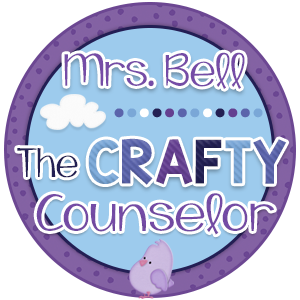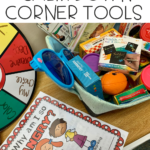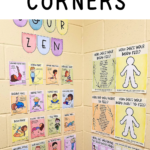7 Calm Down Corner Tools

I absolutely love having a calm-down corner/calming area in my office. When used correctly, calm down corners can be a great tool to teach students how to calm and regulate themselves.
Calm down corners give kids the space to trial and error different calming strategies and coping skills. They help kids build confidence in their ability to use calming strategies. Students are able to test-drive strategies to see what works best for them.
Here are the seven items I have in every calm-down corner I have ever set up. I love the calm these items have brought my students through the years.
This post does contain affiliate links. Trust I would never link a product I haven’t used myself and loved.
Comfortable Calm Corner/Area of the Room
Find an area of the room that can work as a calming corner/area. Most people prefer corners but any calm quiet area of the room will work. Make sure it is in a safe, quiet spot that students are able to access easily. It should be somewhere you can monitor the student but they have space to be alone. Students should have the freedom to process their emotions in a private setting free from judgment.
In my last office, the back corner of the room was my calming area “zen zone“. It was behind my desk and felt very safe and private. I would turn my chair so that I could work and see the student at the same time. It worked because the child felt free to try the different strategies without the pressure of someone staring at them. They knew I was there to support them and could ask me for whatever they needed.
When COVID hit, I created a digital calm down corner that students could access from a table. I shared it with teachers who uploaded it to Google Classrooms.

In my current office, my calming supplies are set up on a shelf beside my desk. Students can grab the supplies and then head to a cozy chair in the corner. They can then use the tools to regulate themselves.

Expectations/Rules Clearly Explained
If students do not know how to use a calming corner, they are not able to fully reap the benefits. Clearly explain your expectations to students and have the rules/regulations of your calming area posted in a highly visible area.
In my previous office, I had my expectations for my calming poster posted on my office door. Students were aware of the expectations before they even walked in.
Once students were trained on the purpose of the calming corner, they would:
- Walk into my office
- Head to the corner
- Use their strategies
- Head right back to class
It was beautiful to see so many students learn how to handle their emotions.
Timers
Part of knowing the expectations of the calming corner is knowing how long you have to use it. I love these timers and have them front and center in my calming area.
Depending on the severity of the situation, students can have up to 15 minutes in the calming area.

Students are taught to flip the timer as soon as they enter my calming area. They are told that it is time to head back to class when the sand in the timer runs out. They have to use their time wisely.
Kids love these sand timers. Some students find watching the sand fall from the timers extremely calming. They will intently watch every drop of sand fall and then promptly head to class.
Sand timers are a must for any calm-down corner.
Fidgets
There is so much more to fidgets than just fidget spinners. Fidgets can be made out of virtually anything. As long as something is small, discrete, and able to be manipulated easily, it can be considered a fidget tool.
I have both fidget toys and fidget tools in my calming area.

Fidget toys are meant to be fun and playful. I think of fidget spinners and noisy clicky items when I think of fidget toys. A fidget that can be used quietly in a way that other students wouldn’t notice and isn’t distracting is a fidget tool.
Fidget tools are meant to be discreet and used for skill-building. Such as a worry stone that a student rubs while taking a test. The goal would be to eventually no longer need the stone because they are able to calm themselves.
I like having a mix of fidget tools and toys. It is important to teach students when it would be appropriate to use each of the items. For example, a fidget toy that’s noisy is fun when it’s just the two of us in my office. It wouldn’t be great for a large classroom setting. It’s important to me that students learn skills they can discreetly use to help keep themselves in control without affecting others.
One of my favorite fidget tools is sensory rings. They are simple, discreet, and they don’t usually bother other people. I love the flexibility they offer.
Pipe Cleaners
I can’t even tell you how many students have been distracted from the verge of tantrums by pipe cleaners. Challenge a kid to a name-making contest out of pipe cleaners and they are hooked. See who can use the fewest pipe cleaners to spell out their full names.

Choice Wheel
Sometimes, a kid just needs to be told which calming strategy to use. The spinner wheel is perfect for this. Kids can spin the wheel and try out whichever strategy they land upon.
Students spin the wheel and get to try out new strategies that they land upon by chance. This is one of my favorite items in my calm-down corner. I like to see how excited people get when they watch it spin.
Books
In my opinion, you can never have too many books. I love filling my office with books that teach valuable lessons and skills. There are so many books scattered about my office.
I like to keep my books about anger right next to my calm down corner. Some kids really like to use reading as an escape. Why not let them escape into a book about calming strategies and coping skills?

Along with the books I like to provide workbooks and flipbooks. This gives all students various outlets to express themselves. They have the freedom to choose which things work best for them.
There you have it! The seven things I have in every single calm-down corner I’ve ever had.
Is there anything you would suggest I should include?
Let me know in the comments below!
Check out all these items and more in my Amazon Storefront.
Stay Connected:

Read more...
Share it...
You might also like...

Hi, I'm Ashley!
I am a school counselor who helps educators to change the lives of students with engaging, creative, and meaningful SEL resources.










